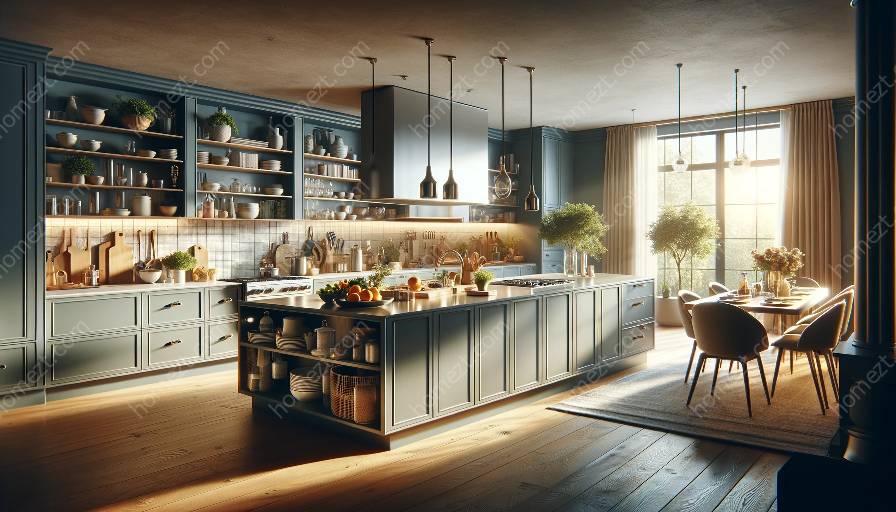Kitchen islands are a versatile and functional addition to any kitchen space. They can serve as a focal point for social gatherings, additional storage, or a space for meal preparation. When it comes to kitchen island size and layout, there are a few key considerations to keep in mind to ensure that your island maximizes both functionality and style within your kitchen. In this guide, we'll explore the different aspects to consider when designing your kitchen island, including size, layout, and practical tips for creating a cohesive kitchen and dining space.
Choosing the Right Size
The size of your kitchen island is a crucial factor in its overall functionality. It's important to strike a balance between having enough space to work efficiently and ensuring that the island doesn't overwhelm the kitchen. A general guideline is to allow for at least 42-48 inches of clearance around the island to ensure that there's enough space for individuals to move freely and for cabinet and appliance doors to open comfortably. If your kitchen is spacious, you may be able to accommodate a larger island, but in smaller kitchens, a more compact island might be a better fit.
Consider Your Kitchen's Layout
The layout of your kitchen will play a significant role in determining the most suitable size and configuration for your island. If your kitchen has a more open-plan design, you can consider a larger, more expansive island that can become a central hub for both food preparation and socializing. On the other hand, in a galley or L-shaped kitchen, a narrower and more streamlined island might be a better fit to maintain a smooth flow of movement throughout the space.
Functionality and Purpose
It's essential to consider the primary purpose of your kitchen island when determining its size and layout. If you plan to use it predominantly for meal preparation, a larger surface area may be beneficial. Alternatively, if you envision it as a gathering area for family and friends, you might prioritize seating space and a more sociable design. Incorporating functional elements, such as built-in appliances or additional storage, can also impact the overall dimensions and layout of the island.
Seamless Integration with Your Kitchen and Dining Area
Coordinating the size and layout of your kitchen island with the surrounding kitchen and dining area will contribute to a harmonious and visually appealing space. If your kitchen features an open layout that flows into a dining area or living space, ensure that the island's dimensions complement the overall design of the room. Consider features such as matching cabinetry, cohesive countertop materials, or coordinating seating to unite the kitchen island with the broader space.
Tips for Stylish Layouts
Once you've determined the ideal size for your kitchen island, there are several layout considerations to enhance both functionality and style.
- Work Triangle: Ensure that the island doesn't disrupt the natural flow within the kitchen work triangle. The distance between the island, stove, sink, and refrigerator should facilitate smooth movement during meal preparation.
- Open Shelving: Incorporating open shelves into the island's design can provide both practical storage and an opportunity to display decorative items or kitchen essentials.
- Customization: Consider incorporating unique features into the island, such as a built-in wine rack, pull-out trash bins, or a dedicated area for pet bowls to personalize its functionality to suit your lifestyle.
- Seating Arrangements: If your island includes seating, ensure that there's enough space for comfortable dining and that the layout promotes interaction with others in the kitchen.
Creating a Cohesive Space
Finally, integrating your kitchen island seamlessly with your kitchen and dining area will contribute to a cohesive and inviting space. Consider design elements such as pendant lighting, coordinating bar stools, or complementary decorative accents to enhance the visual appeal and functionality of the island within your overall kitchen and dining space.
By carefully considering the size and layout of your kitchen island, you can create a harmonious and functional focal point for your kitchen and dining area. Whether you prioritize meal preparation, socializing, or additional storage, the right island design can elevate both the aesthetic and practical elements of your kitchen space.


